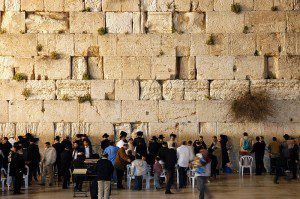
(Wikimedia CC; click to enlarge.)
Cornerstones serve no vital structural function in modern building. Indeed, they’re often added very late in the construction process, during purely ceremonial events. In premodern times, though, the cornerstone was used to align the other foundations and walls, etc., of a new structure. It was placed at the very beginning of construction and served as a point of reference for the workers, from which they took their bearings. Thus, cornerstones had to be precisely cut, and many potential stones were inspected and rejected before the builders settled on an appropriate one.
In the parable under consideration here, references to prophets and apostles, and ultimately to the divine Son himself, are painfully clear. And Jesus is the chief cornerstone whose qualities go unrecognized by the builders but are known to God and the discerning faithful.
Some, incidentally, think that the actual “stone rejected by the builders” may have been found. The idea is that Jesus may have been using a particular stone as a visual aid:
http://tbts.info/episodes/1443










